From inside (document excerpt):
J94S.book Page 1 Saturday, June 23, 2001 1:04 PM A Word to Mazda Owners Thank you for choosing a Mazda. We at Mazda design and build vehicles with complete customer satisfaction in mind. To help ensure enjoyable and trouble-free operation of your Mazda, read this manual carefully and follow its recommendations. An Authorized Mazda Dealer knows your vehicle best. So when maintenance or service is necessary, that’s the place to go. Our nationwide network of Mazda professionals is dedicated to providing you with the best possible service.
User and Operator’s Vehicle Manual Guide. Free Auto PDF Manual Download. Years covered by this manual: 2002.
We assure you that all of us at Mazda have an ongoing interest in your motoring pleasure and in your full satisfaction with your Mazda product. Mazda North American Operations Important Notes About This Manual Keep this manual in the glove box as a handy reference for the safe and enjoyable use of your Mazda. Should you resell the vehicle, leave this manual with it for the next owner. All specifications and descriptions are accurate at the time of printing. Because improvement is a constant goal at Mazda, we reserve the right to make changes in specifications at any time without notice and without obligation. Air Conditioning and the Environment Your Mazda’s genuine air conditioner is filled with R134a, a refrigerant that has been found not to damage the earth’s ozone layer. If the air conditioner does not operate properly, consult an Authorized Mazda Dealer. Please be aware that this manual applies to all models, equipment and options. As a result, you may find some explanations for equipment not installed on your vehicle. 2001 Mazda North American Operations Printed in U.S.A. Form No. 8Q50-EA-01G J94S.book Page 2 Saturday, June 23, 2001 1:04 PM How to Use This Manual We want to help you get the most driving pleasure from your vehicle. Your owner’s manual, when read from cover to cover, can do that in many ways. Illustrations complement the words of the manual to best explain how to enjoy your Mazda. By reading your manual, you can find out about the features, important safety information, and driving under various road conditions. Index: A good place to start is the Index, an alphabetical listing of all information in your manual. You’ll find several WARNINGs, CAUTIONs, and NOTEs in the manual. WARNING A WARNING indicates a situation in which serious injury or death could result if the warning is ignored. CAUTION A CAUTION indicates a situation in which bodily injury or damage to your vehicle, or both, could result if the caution is ignored. The above symbol in this manual means “Do not do this ” or “Do not let this happen “. NOTE A NOTE provides information and sometimes suggests how to make better use of your vehicle. The above symbol, located on some parts of the vehicle, indicates that this manual contains information related to the part. Please refer to the manual for a detailed explanation. Form No. 8Q50-EA-01G J94S.book Page 3 Saturday, June 23, 2001 1:04 PM Table of Contents Your Vehicle at a Glance Interior, exterior views and part identification of your Mazda. 11 Essential Safety Equipment Use of safety equipment, including seats, seat belt system, SRS air bags and child-restraint systems. Knowing Your Mazda Explanation of basic operations and controls; opening/closing and adjustment of various parts. Before Driving Your Mazda Important information about driving your Mazda. Driving Your Mazda Explanation of instruments and controls. Interior Comfort Use of various features for drive comfort, including air-conditioning and audio system. In Case of an Emergency Helpful information on what to do in an emergency. Maintenance and Care How to keep your Mazda in top condition. Customer Information Important consumer information including warranties and add-on equipment. Specifications Technical information about your Mazda. Index Form No. 8Q50-EA-01G J94S.book Page 4 Saturday, June 23, 2001 1:04 PM J94S.book Page 1 Saturday, June 23, 2001 1:04 PM 1 Your Vehicle at a Glance Interior, exterior views and part identification of your Mazda. Dashboard Overview 1- 2 Interior Overview 1- 3 Exterior Overview . 1- 4 1-1 Form No. 8Q50-EA-01G J94S.book Page 2 Saturday, June 23, 2001 1:04 PM Your Vehicle at a Glance Dashboard Overview Hazard warning flasher switch (page 5-36) Driver-side air bag (page 2-25) Wiper and washer lever (page 5-34) Instrument cluster (page 5-19) Climate control system (page 6-2) Lighting control / Turn signals (page 5-32) Audio system (page 6-11) Power window switches (page 3-7) Shift lever (page 5-9) Passenger-side air bag (page 2-25) Glove box (page 6-42) Power window lock switch (page 3-8) Center console (page 6-43) Hood release handle (page 3-9) Cup holder (page 6-40) Outside mirror switch (page 3-21) Parking brake (page 5-5) Ignition switch (page 5-2) 1-2 Form No. 8Q50-EA-01G J94S.book Page 3 Saturday, June 23, 2001 1:04 PM Your Vehicle at a Glance Interior Overview Sunvisors (page 6-44) Interior light (page 6-37) Seat belts (page 2-9) Rearview mirror (page 3-22) Vanity mirror (page 6-44) Side air bags (page 2-25) Front seats (page 2-2) 1-3 Form No. 8Q50-EA-01G J94S.book Page 4 Saturday, June 23, 2001 1:04 PM Your Vehicle at a Glance Exterior Overview Fuel-filler lid (page 3-14) Rear window defroster (page 5-35) Child safety lock (page 3-5) High-mount brake light (page 8-33) Trunk lid (page 3-10) License plate lights (page 8-33) Reverse lights (page 8-33) Brake lights / Taillights (page 8-33) Rear-turn signal lights (page 8-33) Windshield wiper blades (page 8-22) Power windows (page 3-7) Hood (page 3-9) Doors and keys (page 3-2) Tires (page 8-25) Outside mirrors (page 3-21) Headlights (page 8-30) Front-turn signal lights / Parking lights (page 8-32) 1-4 Form No. 8Q50-EA-01G J94S.book Page 1 Saturday, June 23, 2001 1:04 PM 2 Essential Safety Equipment Use of safety equipment, including seats, seat belt system, SRS air bags and child-restraint systems. Seats 2- 2 Front Seats . 2- 2 Rear Seat 2- 6 Seat Belt Systems . 2- 9 Seat Belt Precautions . 2- 9 3-Point Type Seat Belt . 2-12 Rear Center Position Seat Belt 2-14 Seat Belt Extender . 2-16 Seat Belt Warning Light/Beep . 2-17 Child Restraint 2-18 Child Restraint Precautions . 2-18 Installing Child-Restraint Systems 2-21 SRS Air Bags . 2-25 Supplemental Restraint Systems (SRS) Precautions . 2-25 Air Bag System Description 2-29 2-1 Form No. 8Q50-EA-01G J94S.book Page 2 Saturday, June 23, 2001 1:04 PM Essential Safety Equipment Seats Front Seats (Manually operated model) M Seat Slide (Manually operated model) WARNING Securing the Seats: Adjustable seats and seatbacks that are not securely locked are dangerous. In a sudden stop or collision, the seat or seatback could move, causing injury. Make sure the adjustable components of the seat are locked in place by attempting to slide the seat forward and backward and rocking the seatback. (Electrically operated model) The seat-bottom tilt, seat height and seat slide can be electrically adjusted. Move them to the desired positions by using the switch on the seat’s lower side. WARNING Driver’s Seat Adjustment: Adjusting the driver’s seat while the vehicle is moving is dangerous. The driver could lose control of the vehicle and have an accident. Adjust the driver’s seat only when the vehicle is stopped. To move a seat forward or backward, raise the lever and slide the seat to the desired position and release the lever. Lever CAUTION · The seat-bottom power adjust is operated by a motor. Avoid extended operation because excessive use can damage the motor. · To prevent the battery from running down, avoid using the power adjust when the engine is stopped. The adjuster uses a great amount of electric power. · Don’t use the switch to make more than one adjustment at a time. Make sure the lever returns to its original position and the seat is locked in place by attempting to push it forward and backward. 2-2 Form No. 8Q50-EA-01G J94S.book Page 3 Saturday, June 23, 2001 1:04 PM Essential Safety Equipment Seats (Electrically operated model) To slide the seat, move the slide lifter switch on the outside of the seat to the front or back and hold it. Release the switch at the desired position. M Seat Recline WARNING Reclining: Sitting in a reclined position while the vehicle is moving is dangerous because you don’t get the full protection from seat belts. During sudden braking or a collision, you can slide under the lap belt and suffer serious internal injuries. For maximum protection, sit well back and upright. Unlocked Seatback: A seatback plays an important role in your protection in a vehicle. Leaving the seatback unlocked is dangerous as it can allow passengers to be ejected or thrown around and baggage to strike occupants in a sudden stop or collision, resulting in severe injury. After adjusting the seatback at any time, even when there are no other passengers, rock the seatback to make sure it is locked in place. 2-3 Form No. 8Q50-EA-01G J94S.book Page 4 Saturday, June 23, 2001 1:04 PM Essential Safety Equipment Seats To change the seatback angle, lean forward slightly while raising the lever. Then lean back to the desired position and release the lever. M Seat Tilt (Driver’s Seat) (Manually operated model) The seat-bottom angle can be adjusted by rotating the dial. Up Lever Dial Down Make sure the lever returns to its original position and the seatback is locked in place by attempting to push it forward and backward. (Electrically operated model) Front height adjustment To adjust the front height of the seatbottom, raise or lower the front of the slide lifter switch on the left side of the seat. CAUTION When returning a rear-reclined seatback to its upright position, make sure you support the seatback while operating the seatback lever. If the seatback is not supported, it will flip forward suddenly and could cause injury. 2-4 Form No. 8Q50-EA-01G J94S.book Page 5 Saturday, June 23, 2001 1:04 PM Essential Safety Equipment Seats Rear height adjustment Raise or lower the back of the switch to adjust the rear height of the seat-bottom. M Head Restraint WARNING Head Restraints Adjustment: Driving with the head restraints adjusted too low or removed is dangerous. With no support behind your head, your neck could be seriously injured in a collision. Always drive with the head restraints inserted when seats are being used and make sure they are properly adjusted. Height adjustment Raise the seat-bottom by pulling up on the center of the switch. Release the switch when the seat is where you want it. Lower the seat-bottom by pressing down on the center and releasing it when the seat is where you want it. Height adjustment To raise a head restraint, pull it up to the desired position. To lower the head restraint, press the stopcatch release, then push the head restraint down. Stop-catch release Adjust the head restraint so that the top parallels the top of the passenger’s ears, never the passenger’s neck. 2-5 Form No. 8Q50-EA-01G J94S.book Page 6 Saturday, June 23, 2001 1:04 PM Essential Safety Equipment Seats Rear Seat WARNING Unlocked Seatback: A seatback plays an important role in your protection in a vehicle. Leaving the seatback unlocked is dangerous as it can allow passengers to be ejected or thrown around and baggage to strike occupants in a sudden stop or collision, resulting in severe injury. After adjusting the seatback at any time, even when there are no other passengers, rock the seatback to make sure it is locked in place. Passenger on the Folded Seatback: Driving with a passenger on the folded seatback is dangerous. Allowing a child to sit up on the folded seatback while the vehicle is moving is particularly dangerous. In a sudden stop or even a minor collision, a child not in a proper seat or child-restraint system and seat belt could be thrown forward, back or even out of the car resulting in serious injuries or death. The child or other objects in the baggage area could be thrown into other occupants and cause serious injury. Never allow a passenger to sit or stand on the folded seatback while the vehicle is moving. WARNING Stacking Cargo: Stacking luggage or other cargo higher than the seatbacks, and putting things on the rear package tray is dangerous. During sudden braking or a collision, objects can become projectiles that may hit and injure passengers. Don’t stack things higher than the seatbacks or put things on the rear package tray. Securing Seats: Adjustable seats and seatbacks that are not securely locked are dangerous. In a sudden stop or collision, the seat or seatback could move, causing injury. Make sure the adjustable components of the seat are locked in place. Seat Adjustment: Adjusting the seat while the vehicle is moving is dangerous. Sudden braking or a collision could cause serious injury. Adjust the seat only when the vehicle is stopped. 2-6 Form No. 8Q50-EA-01G J94S.book Page 7 Saturday, June 23, 2001 1:04 PM Essential Safety Equipment Seats 2. Push the button and fold the seatback forward. WARNING Children and the Folding Rear Seats: Playing with the folding rear seats is dangerous. Once the seats are back up, a child in the trunk would not be able to get out the way they had entered. If you have small children, keep the seatbacks locked. Do not give the car keys to children and do not allow them to play in the vehicle. NOTE Button When returning a rear seat to its original position, also replace the seat belt to its normal position. Verify that the seat belt pulls and retracts. To return the seatback to its original position, reverse the procedure. M Rear Seatback Lock To lock or unlock a seatback, move the lever. Lock Unlock Unlock Lock M Split-Folding Rear Seatback To provide more space in the luggage compartment. 1. Unfasten the lap portion of the rearcenter seat belt (page 2-15). CAUTION Always unfasten the lap portion of the belt before folding the rear-left seatback. Leaving the lap portion of the belt fastened could cause damage to the seat belt, buckle and seatback. NOTE The seatback locks are part of the trunk security system (page 3-11). 2-7 Form No. 8Q50-EA-01G J94S.book Page 8 Saturday, June 23, 2001 1:04 PM Essential Safety Equipment Seats M Armrest The armrest can be used or placed upright. 2-8 Form No. 8Q50-EA-01G J94S.book Page 9 Saturday, June 23, 2001 1:04 PM Essential Safety Equipment Seat Belt Systems Seat Belt Precautions Seat belts help to decrease the possibility of severe injury during accidents and sudden stops. Mazda recommends that the driver and all passengers always wear seat belts. All of the seat belt retractors are designed to keep the lap/shoulder belts out of the way when not in use. The driver’s seat belt has no provisions for child-restraint systems and has only an emergency locking mode. The driver may wear it comfortably, and it will lock during a collision. However, the front passenger’s seat and rear lap/shoulder belt retractors operate in two modes: emergency locking mode, and for child-restraint systems, automatic locking mode. WARNING Not Wearing Seat Belts: Not wearing a seat belt is extremely dangerous. During a collision, occupants not wearing seat belts could hit someone or things inside the vehicle or even be thrown out of the vehicle. They could b …..
under controlled conditions on a specified indoor laboratory test wheel. Sustained high temperature can cause the material of the tire to degenerate and reduce tire life, and excessive temperatures can lead to sudden tire failure. Grade C corresponds to a level of performance which all passenger vehicle tires must meet under the Federal Motor Vehicle Safety Standard No. 109. Grades B and A represent higher levels of performance on the laboratory test wheel than the minimum required by law. 9-12 Form No. 8Q50-EA-01G J94S.book Page 13 Saturday, June 23, 2001 1:04 PM Customer Information Uniform Tire Quality Grading System (UTQGS) WARNING The temperature grade for this tire is established for a tire that is properly inflated and not overloaded. Excessive speed, underinflation, or excessive loading, either separately or in combination, can cause heat buildup and possible tire failure. These grades will be added to the sidewalls of passenger vehicle tires over the next several years according to a schedule established by the NHTSA and the tire manufacturers. The grade of tires available as standard or optional equipment on Mazda vehicle may vary with respect to grade. ALL PASSENGER VEHICLE TIRES MUST CONFORM TO THESE GRADES AND TO ALL OTHER FEDERAL TIRE-SAFETY REQUIREMENTS. M Uniform Tire Quality Grading Quality grades can be found where applicable on the tire sidewall between tread shoulder and maximum section width. For example: Treadwear 200 Traction AA Temperature A UTQGS MARK (example) TREADWEAR 200 TRACTION AA TEMPERATURE A 9-13 Form No. 8Q50-EA-01G J94S.book Page 14 Saturday, June 23, 2001 1:04 PM Customer Information Reporting Safety Defects Reporting Safety Defects If you believe that your vehicle has a defect which could cause a crash or could cause injury or death, you should immediately inform the National Highway Traffic Safety Administration (NHTSA) in addition to notifying Mazda Motor Corporation (Your Mazda Importer/Distributor). If NHTSA receives similar complaints, it may open an investigation, and if it finds that a safety defect exists in a group of vehicles, it may order a recall and remedy campaign. However, NHTSA cannot become involved in individual problems between you, your dealer, or Mazda Motor Corporation (Your Mazda Importer/Distributor). To contact NHTSA, you may either call the Auto Safety Hotline toll-free at 1 (800) 4249393 (or 366-0123 in Washington, D.C. area) or write to: NHTSA, U.S. Department of Transportation. Washington, D.C. 20590. You can also obtain other information about motor vehicle safety from the Hotline. NOTE If you live in the U.S.A., all correspondence to Mazda Motor Corporation should be forwarded to: Mazda North American Operations 7755, Irvine Center Drive Irvine, California 92618-2922 P.O. Box 19734 Irvine, CA 92623-9734 Customer Assistance Center or toll free at 1 (800) 222-5500 If you live outside of the U.S.A., please contact the nearest Mazda Distributor shown (page 9-7) in this booklet. 9-14 Form No. 8Q50-EA-01G J94S.book Page 15 Saturday, June 23, 2001 1:04 PM Customer Information Service Publications Service Publications Factory-authorized Mazda service publications are available for owners who wish to do some of their own maintenance and repair. When requesting any of our publications through an Authorized Mazda Dealer, refer to the chart below. If they don’t have what you need in stock, they can order it for you. PUBLICATION ORDER NUMBER 9999 95 019B 02 9999 95 021G 02 9999 95 017C 02 (U.S.A. only) 9999 EC 017C 02 (Canada only) PUBLICATION DESCRIPTION 2002 WORKSHOP MANUAL (English) 2002 WIRING DIAGRAM (English) 2002 OWNER’S MANUAL 2002 OWNER’S MANUAL M WORKSHOP MANUAL: Covers recommended maintenance and repair procedures of the drive train, body and chassis. M WIRING DIAGRAM: Provides electrical schematics as well as component location for the entire electrical system. M OWNER’S MANUAL: This booklet contains information regarding the proper care and operation of your vehicle. This is not a technician’s manual. 9-15 Form No. 8Q50-EA-01G J94S.book Page 16 Saturday, June 23, 2001 1:04 PM J94S.book Page 1 Saturday, June 23, 2001 1:04 PM 10 Specifications Technical information about your Mazda. Identification Numbers . 10- 2 Vehicle Information Labels . 10- 2 Specifications . 10- 4 Specifications 10- 4 10-1 Form No. 8Q50-EA-01G J94S.book Page 2 Saturday, June 23, 2001 1:04 PM Identification Numbers Vehicle Information Labels M Vehicle Identification Number The vehicle identification number legally identifies your vehicle. The number is on a plate attached to the left top side of the dashboard. This plate can easily be seen through the windshield. M Chassis Number M Vehicle Emission Control Information Label M Motor Vehicle Safety Standard Label M Tire Pressure Label 10-2 Form No. 8Q50-EA-01G J94S.book Page 3 Saturday, June 23, 2001 1:04 PM Identification Numbers M Engine Number 2.0-liter engine 2.5-liter engine 10-3 Form No. 8Q50-EA-01G J94S.book Page 4 Saturday, June 23, 2001 1:04 PM Specifications Specifications M Engine Model Item Type Bore×Stroke Displacement Compression ratio 2.0-liter engine DOHC-16V in-line, 4-cyl 83.0 × 92.0mm (3.27 × 3.62 in) 1,991 ml (1,991 cc , 121.5 cu in) 9.1 2.5-liter engine DOHC-24V V6 6-cyl 84.5 × 74.2mm (3.33 × 2.92 in) 2,496 ml (2,496 cc , 152.3 cu in) 9.5 M Electrical System Model Item Battery Alternator Starter Spark-plug number Spark-plug gap *1 Manual *2 2.0 liter engine 2.5-liter engine NGK DENSO Maintenance-free 12V-48AH/5HR 12V-80A 12V-90A 12V-1.0 kW 12V-1.7 kW *1, 12V-1.6 kW *2 BKR5E-11, BKR6E-11 — K16PR-U11, K20PR-U11 PKJ16CR8, PKJ20CR8 1.0–1.1 mm (0.040–0.043 in) 0.7–0.8 mm (0.028–0.031 in) transaxle Automatic transaxle M Lubricant Quality Lubricant Classification API Service SG (Energy Conserving II) SH (Energy Conserving II) SJ SL Any temperature API Service GL-4 or GL-5 (SAE 75W-90) Above 50°F (10°C) API Service GL-4 or GL-5 (SAE 80W-90) ATF M-III or equivalent (e.g. Mercon®) ATF M-III or equivalent (e.g. Dexron® III) ATF M-III or equivalent (e.g. Dexron® II) SAE J1703 or FMVSS116 DOT-3 ILSAC — GF-I GF-II GF-III Engine oil * Manual transaxle oil Automatic transaxle fluid Power steering fluid Brake/clutch fluid * 2.0-liter engine 2.5-liter engine Refer to the recommended SAE viscosity numbers on 8-10. 10-4 Form No. 8Q50-EA-01G J94S.book Page 5 Saturday, June 23, 2001 1:04 PM Specifications M Capacities (Approximate Quantities) Unit Item 2.0-liter engine Engine oil * 2.5-liter engine Coolant Transaxle oil Fuel tank Manual transaxle 2.0-liter engine Automatic transaxle 2.5-liter engine with oil filter replacement without oil filter replacement with oil filter replacement without oil filter replacement L 3.5 3.3 4.0 3.7 7.5 2.7 8.86 8.0 L 64.0 US qt 3.7 3.5 4.2 3.9 7.9 2.9 9.37 8.5 US gal 16.9 Imp qt 3.1 2.9 3.5 3.3 6.6 2.4 7.80 7.0 Imp gal 14.1 * The indicated engine oil capacities are for general reference purposes only. When adding or changing oil, verify the engine oil level with the oil dipstick. M Dimensions Unit: mm (in) Overall length Overall width Overall height Front tread Rear tread Wheelbase 4,760 (187.4) 1,760 (69.3) 1,400 (55.1) 1,500 (59.1) 1,490 (58.7) 2,670 (105.1) M Weights Unit: kg (lb) Model Item GVWR GAWR Front Rear 2.0-liter engine 1,771 (3,904) 959 (2,114) 812 (1,790) 2.5-liter engine 1,827 (4,028) 1,004 (2,214) 823 (1,814) GVWR: Gross Vehicle Weight Rating GAWR: Gross Axle Weight Rating 10-5 Form No. 8Q50-EA-01G J94S.book Page 6 Saturday, June 23, 2001 1:04 PM Specifications M Air Conditioner Gas complies with SAE J639 Maximum operating charge R-134a 0.75 kg (26.5 oz) M Light Bulbs Light bulb Headlights Front turn signal/Parking lights Rear-turn signal lights Brake lights/Taillights High-mount brake lights Reverse lights License plate lights Trunk light Interior lights Map light Courtesy lights Wattage 60/55 27/8 27 27/7 27 18 5 5 10 5 5 M Tires Standard tire Item Type 2.0-liter engine 2.5-liter engine Tire size P205/60R15 90H P205/60R15 90H P205/55R16 89H Inflation pressure kgf/cm 2(psi or lb/po 2) Front Rear 2.2 (32) 1.8 (26) 2.0 (29) Temporary spare tire Tire size T125/70D15 Inflation pressure kPa (psi) 420 (60) Fuses Refer to 8-35 10-6 Form No. 8Q50-EA-01G J94S.book Page 1 Saturday, June 23, 2001 1:04 PM 11 Index 11-1 Form No. 8Q50-EA-01G J94S.book Page 2 Saturday, June 23, 2001 1:04 PM Index A Accessory Socket . 6-38 Add-On Non-Genuine Parts and Accessories 9-10 Air Bag Systems 2-25 Air Filter 8-21 Antenna 6-11 Anti-Lock Brake System (ABS) 5-6 Warning light 5-7 Appearance Care 8-40 Audio System . 6-11 Audio set . 6-19 Operating tips for audio system . 6-11 Safety certification 6-36 Automatic Transaxle Driving tips . 5-12 Fluid 8-18 Overdrive 5-11 Shift-lock system 5-10 Transaxle ranges . 5-9 B Brakes Anti-lock brake system (ABS) 5-6 Foot brake .5-4 Pad wear indicator 5-7 Parking brake 5-5 Warning light 5-5 Break-In Period 4-7 Bulb Replacement 8-29 C Capacities .10-5 Carbon Monoxide 4-5 Catalytic Converter 4-4 Cell Phones 9-11 Center Console .6-43 Center Pocket .6-42 Child Restraint Child restraint precautions 2-18 Installing child-restraint systems 2-21 Child Safety Lock for Rear Door .3-5 Climate Control System .6-2 Gas specifications .10-6 Courtesy Light 6-38 Cruise Control 5-13 Cup Holders .6-40 Customer Assistance 9-2 B Battery Emergency starting . 7-12 Maintenance . 8-24 Specifications . 10-4 Beeps Ignition key reminder . 5-31 Lights-on reminder . 5-31 Before Starting the Engine . 4-6 After getting in . 4-6 Before getting in . 4-6 Body Lubrication . 8-21 Brake/Clutch Fluid 8-15 D Dashboard Illumination 5-22 Daytime Running Lights 5-33 Defroster Rear window .5-35 Dimensions .10-5 Door Locks .3-3 Driving In Flooded Area 4-10 11-2 Form No. 8Q50-EA-01G J94S.book Page 3 Saturday, June 23, 2001 1:04 PM Index D Driving Tips .4-7 Automatic transaxle 5-12 Break-in period .4-7 Driving in flooded area .4-10 Hazardous driving .4-8 Money-saving suggestions 4-7 Rocking the vehicle 4-8 Trailer towing .4-11 Winter driving .4-9 F Flasher Hazard warning .5-36 Headlights .5-32 Flat Tire 7-3 Changing .7-5 Spare tire and tool storage .7-3 Fluids Classification .10-4 Owner maintenance .8-7 Foot Brake 5-4 Front seats 2-2 Fuel Filler lid and cap .3-14 Gauge 5-22 Requirements 4-2 Tank capacity 10-5 Fuses .8-35 Panel description .8-37 Replacement 8-35 E Emergency Starting 7-12 Flooded engine 7-12 Jump-starting 7-12 Push-starting .7-14 Emergency Towing 7-15 Emission Control System .4-4 Engine Coolant 8-13 Exhaust gas .4-5 Hood release .3-9 Oil .8-10 Overheating .7-10 Starting 5-3 Engine Compartment Overview 8-9 Engine Coolant Overheating .7-10 Engine Coolant Temperature Gauge .5-21 Exhaust Gas .4-5 Exterior Care 8-42 Eyeglass Holder .6-41 G Gauges 5-19 Glove Box 6-42 H Hazard Warning Flasher .5-36 Hazardous Driving .4-8 Headlights Control 5-32 Flashing .5-32 High-low beam 5-32 On reminder 5-32 Hood Release 3-9 Horn 5-36 11-3 Form No. 8Q50-EA-01G J94S.book Page 4 Saturday, June 23, 2001 1:04 PM Index I Ignition Keys 3-2 Switch . 5-2 Illuminated Entry System 6-37 Immobilizer System . 3-17 In Case of Emergency 7-1 Indicator Lights 5-23 Cruise set 5-30 Headlight high-beam 5-29 O/D OFF . 5-30 Security . 5-29 TCS OFF 5-30 Instrument Cluster . 5-19 Interior Care . 8-45 Interior Lights 6-37 M Maintenance .8-1 Introduction .8-2 Owner maintenance precautions 8-8 Owner maintenance schedule .8-7 Scheduled 8-3 Manual Transaxle Operation 5-8 Map Lights .6-37 Meters and Gauges .5-19 Mirrors Outside mirrors .3-21 Rearview mirror 3-22 Money-Saving Suggestions 4-7 O Odometer and Trip Meter 5-20 Outside Mirrors 3-21 Overhead light 6-37 Overheating 7-10 Overloading 4-11 J Jump-Starting . 7-12 K Keyless Entry System 3-5 Keys . 3-2 P Paint Damage .8-40 Parking Brake .5-5 Parking in an Emergency .7-2 Power Door Locks .3-4 Power Steering .5-12 Fluid 8-17 Power Windows .3-7 Push-Starting 7-14 L Label Information 10-2 Lane-Change Signals . 5-33 Light Bulbs Replacement . 8-29 Specifications . 10-6 Lighting Control 5-32 Lubricant Quality . 10-4 11-4 Form No. 8Q50-EA-01G J94S.book Page 5 Saturday, June 23, 2001 1:04 PM Index R Rear Door Child Safety Lock 3-5 Rear Seat 2-6 Rear Window Defroster .5-35 Rear-Armrest Box 6-43 Rearview Mirror .3-22 Recreational Towing 7-16 Rocking the Vehicle .4-8 S Storage Compartments .6-41 Storage Pocket 6-42 Sunroof .3-15 Sunshade .3-16 Sunvisors 6-44 T Tachometer .5-21 Temporary Spare Tire 8-28 Theft-Deterrent System 3-19 Tiedown Hook 7-16 Tires Flat tire 7-3 Inflation pressure .8-26 Replacement 8-27 Rotation .8-27 Snow tires 4-9 Spare tire and tool storage .7-3 Specifications 10-6 Tire chains .4-10 Uniform tire quality grading system (UTQGS) .9-12 Tool 7-3 Towing Description 7-15 Emergency towing 7-15 Recreational towing 7-16 Trailer towing 4-11 Traction Control System (TCS) .5-16 Indicator light 5-17 Switch 5-17 Warning light 5-17 Trailer Towing 4-11 Trip Meter 5-20 Trunk Lid 3-10 Trunk Light 3-11 S Safety Defects, Reporting 9-14 Seat Belt System 3-point type .2-12 Automatic locking 2-11 Emergency locking .2-10 Extender 2-16 Pregnant women .2-10 Rear-center lap/shoulder .2-14 Seat belt precautions .2-9 Warning light/beep .2-17 Seats Front seat 2-2 Rear seat 2-6 Security System Immobilizer system 3-17 Theft-deterrent system 3-19 Service Publications .9-15 Spare Tire and Tool Storage 7-3 Specifications .10-4 Speedometer .5-20 SRS Air Bags Air bag system description .2-29 Supplemental restraint systems precautions 2-25 Warning light 2-34 Starting the Engine .5-3 Steering Wheel .3-21 Horn 5-36 11-5 Form No. 8Q50-EA-01G J94S.book Page 6 Saturday, June 23, 2001 1:04 PM Index T Trunk Release Handle 3-12 Turn and Lane-Change Signals . 5-33 V Vanity Mirrors . 6-44 Vehicle Information Labels . 10-2 W Warning Lights 5-23 ABS 5-28 Air bag system 5-28 Brake system 5-25 Charging system . 5-26 Check engine 5-27 Door-ajar . 5-28 Engine oil pressure . 5-26 Immobilizer system 5-29 Low fuel 5-27 Low washer fluid level . 5-27 Seat belt 5-25 TCS . 5-27 Warranty 9-8 Washer Fluid 8-20 Weights 10-5 Wheel Replacement . 8-28 Windows Power windows 3-7 Windshield Washer 5-35 Windshield Wipers 5-34 Blades replacement . 8-22 Winter Driving . 4-9 11-6 Form No. 8Q50-EA-01G …
Wikipedia’s page for Mazda
Publisher: www.mazda.com


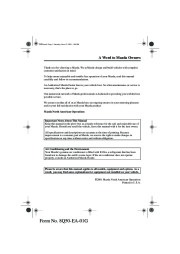 2002 Mazda 626 Owners Manual, 2002 - 1 of 250
2002 Mazda 626 Owners Manual, 2002 - 1 of 250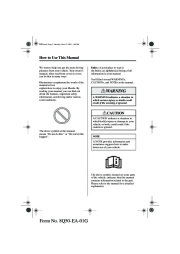 2002 Mazda 626 Owners Manual, 2002 - 2 of 250
2002 Mazda 626 Owners Manual, 2002 - 2 of 250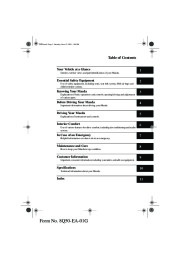 2002 Mazda 626 Owners Manual, 2002 - 3 of 250
2002 Mazda 626 Owners Manual, 2002 - 3 of 250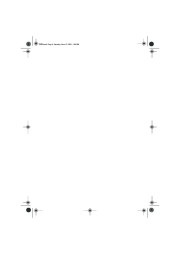 2002 Mazda 626 Owners Manual, 2002 - 4 of 250
2002 Mazda 626 Owners Manual, 2002 - 4 of 250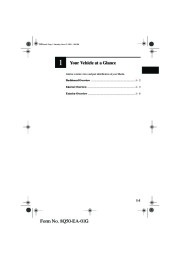 2002 Mazda 626 Owners Manual, 2002 - 5 of 250
2002 Mazda 626 Owners Manual, 2002 - 5 of 250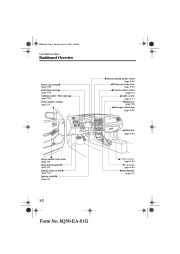 2002 Mazda 626 Owners Manual, 2002 - 6 of 250
2002 Mazda 626 Owners Manual, 2002 - 6 of 250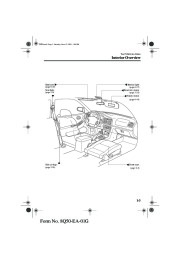 2002 Mazda 626 Owners Manual, 2002 - 7 of 250
2002 Mazda 626 Owners Manual, 2002 - 7 of 250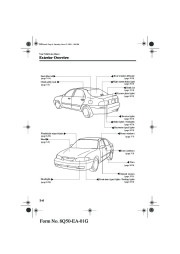 2002 Mazda 626 Owners Manual, 2002 - 8 of 250
2002 Mazda 626 Owners Manual, 2002 - 8 of 250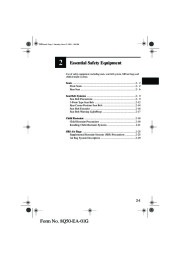 2002 Mazda 626 Owners Manual, 2002 - 9 of 250
2002 Mazda 626 Owners Manual, 2002 - 9 of 250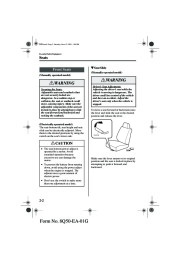 2002 Mazda 626 Owners Manual, 2002 - 10 of 250
2002 Mazda 626 Owners Manual, 2002 - 10 of 250